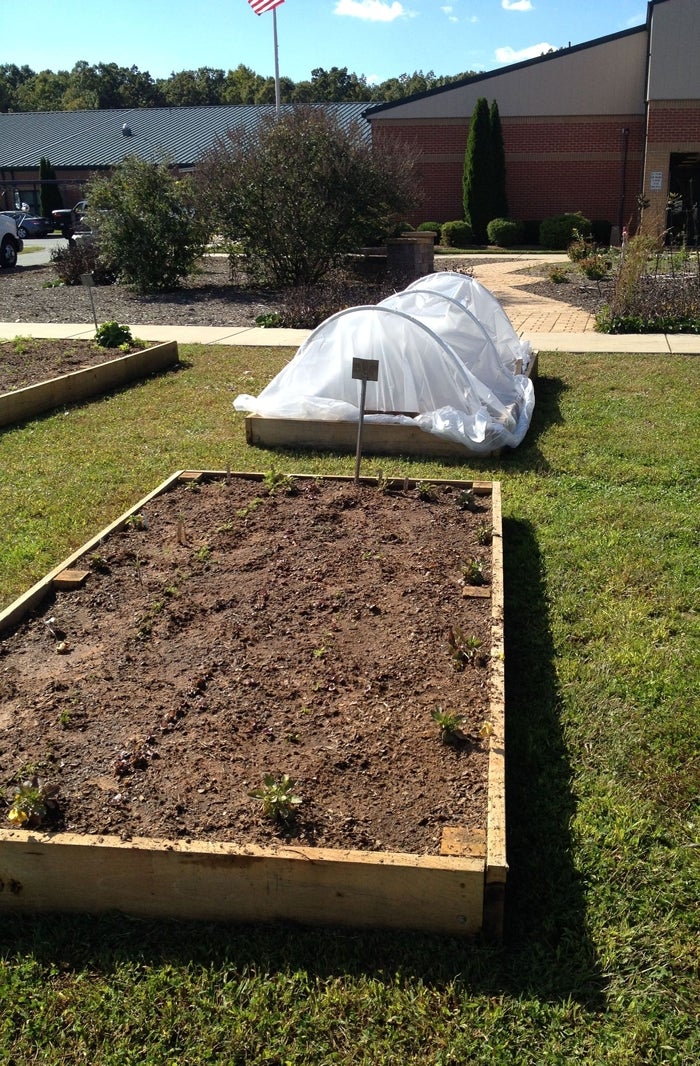Danelle Cutting: Extend your garden’s life
Published 2:16 am Friday, October 24, 2014

- Cooperative Extension The low tunnel built over a raised bed by a fifth-grade class at Millbridge Elementary School.
Would you like to keep your gardens growing throughout the year? Of course. Most of us want to, but we either don’t know how to do it or we do not want to pay for additional upkeep.
If cost is the main concern, we can always use some season extension techniques. In this article, I am going to show you how easy and affordable it can be to extend your growing season.
For the past two years, Cooperative Extension has been working with Millbridge Elementary School on their school gardens. Most of the time, our Extension Master Gardeners are helping teach the classes but every now and then, I get to help out. This year, I have been able to work closer with Laura Lindley’s fifth-grade class. Since one part of the fifth-grade curriculum focuses on weather, I thought the class could do a scientific experiment.
The class planted two raised beds with the exact same plants (carrots, cabbage, broccoli, lettuce and parsnips) in each. In one of the beds, we decided to build a low tunnel. Low tunnels are just one tool that can be used in season extension.
Other season extension items are high tunnels, cold frames, greenhouses and row covers, to name a few.
If you are a homeowner, building a low tunnel for your raised beds is fairly simple. Here is a list of materials I used: One roll of 4 mil plastic (measure your raised bed to make sure the roll will cover the entire bed), 61/2-inch by 24-inch steel rebar (length depends on the depth of your bed), three 3/4-inch-by-10 feet PVC pipe and zip ties.
I bought everything for $30. The raised beds at Millbridge are about 4 feet wide by 8 feet long and about 12 inches deep.
I put rebar at each of the ends and two in the middle. I also cut the PVC pipe down to about 7 feet.
I put the PVC pipe on one rebar and then bent the pipe to fit the rebar pipe directly across, forming a semi-circle. I did this three times. Once I had the pipe in place, the students helped me cover the bed with plastic. Then, we secured the plastic with the zip ties.
To secure the loose plastic on the ends, you can use heavy lumber, rocks, etc. to reduce wind blowing through the tunnel.
Lindley’s class will have to check and water the low tunnel bed more frequently since rain cannot penetrate the plastic covering.
The tunnel will act as a magnifying glass and increase the temperature within the tunnel. In theory, the bed with the tunnel should outperform the bed without a tunnel and produce vegetables longer than the bed that is exposed to the elements.
This is just one way to extend your season, it is also one of the easiest. If you would like to learn more about season extension or gardening in general, contact your local Cooperative Extension agent, Danelle Cutting, at 704-216-8970.





